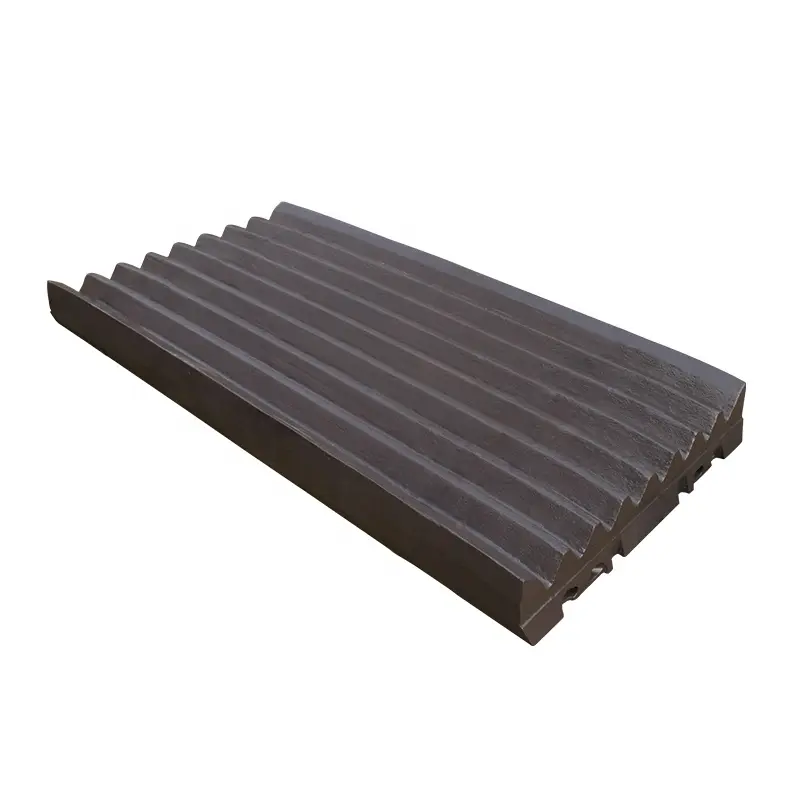Buccal plate and forceps plate
In the operation of jaw crusher, cheek plate and jaw plate are two crucial wearing parts. They are not only directly involved in the crushing process, but also have a profound impact on crushing efficiency and equipment life. This paper will explore how the design of the cheek plate and the jaw plate affects the crushing efficiency and how the overall performance of the equipment can be improved by optimizing the design.
Cheek plate: Key to protection and support
The cheek plate is located on both sides of the jaw crusher and mainly plays a role of protection and support. Its design directly affects the stability and durability of the crusher. High-quality cheek plates are usually made of wear-resistant materials such as high manganese steel or high chromium cast iron, which not only have good impact resistance, but also maintain a long service life in a high wear environment.
The cheek panels are also designed with ease of installation and replacement in mind. Some modern cheek panels have a modular design that makes the replacement process more efficient and reduces downtime. In addition, the shape and size of the cheek plates are carefully optimized to ensure that they fit perfectly with the other components of the crusher, thereby increasing crushing efficiency.
Jaw plate: the core component of crushing efficiency
Jaw plate is the key component of jaw crusher, directly involved in the ore crushing process. Its design has a decisive influence on the crushing efficiency. The jaw plate is usually made of a highly wear-resistant material and the surface is specially treated to enhance its resistance to wear.
The design of jaw plate pays attention to the optimization of tooth shape and Angle. Reasonable tooth shape design can increase the contact area between ore and jaw plate and improve the crushing effect. At the same time, the Angle of the jaw plate is also precisely calculated to ensure that the ore can smoothly enter the crushing chamber and be effectively broken. Some of the new jaw plates also use an adjustable design, which can be adjusted according to the hardness and particle size of different ores, further improving the crushing efficiency.
Design optimization: the key to improve crushing efficiency
By optimizing the design of cheek plate and jaw plate, the crushing efficiency of jaw crusher can be significantly improved. For example, the use of advanced materials and manufacturing processes can extend the service life of wearing parts and reduce the frequency of replacement. At the same time, reasonable structural design can improve the stability and reliability of the equipment and reduce the downtime caused by component wear.
In addition, the application of intelligent technology has also brought new opportunities for the design of the crusher. By installing sensors and automatic control systems, the wear of the cheek plate and jaw plate can be monitored in real time, and the crushing parameters can be adjusted in time to ensure that the equipment is always in the best operating state.
Conclusion
The design of cheek plate and jaw plate is very important to the crushing efficiency of jaw crusher. By selecting high-quality materials, optimizing structural design, and applying intelligent technologies, the performance and efficiency of the equipment can be significantly improved. In the future, with the continuous progress of technology, the design of jaw crusher will pay more attention to environmental protection, energy saving and intelligence, and provide more efficient and reliable solutions for mining and industrial production.




